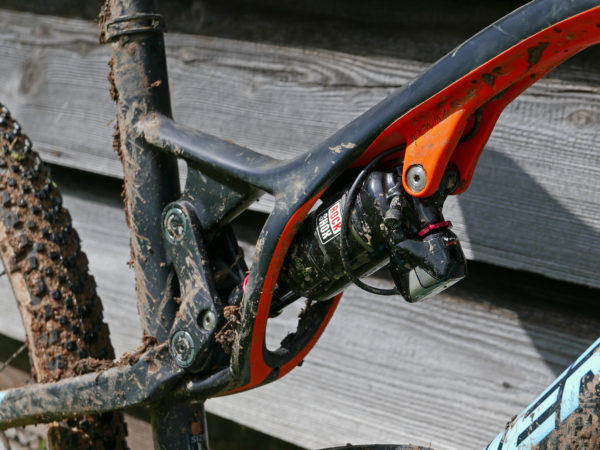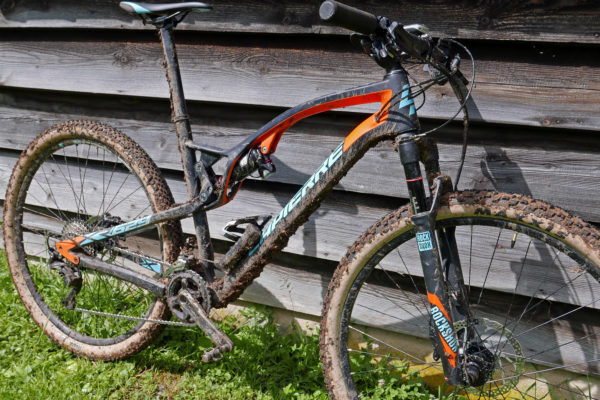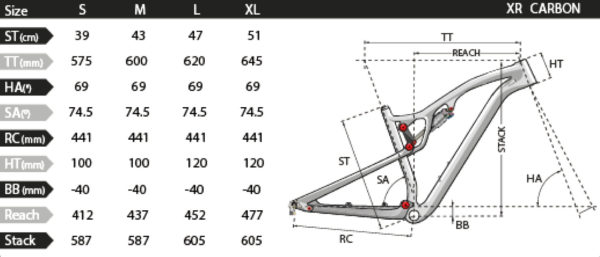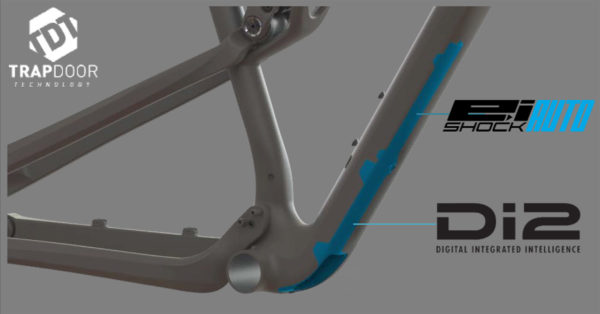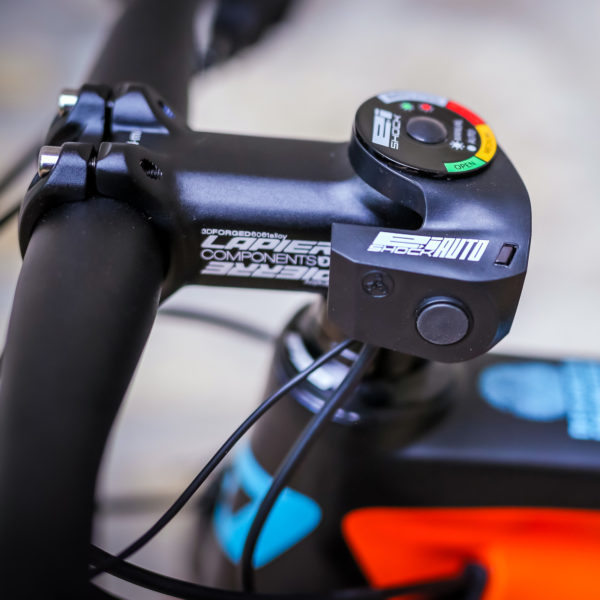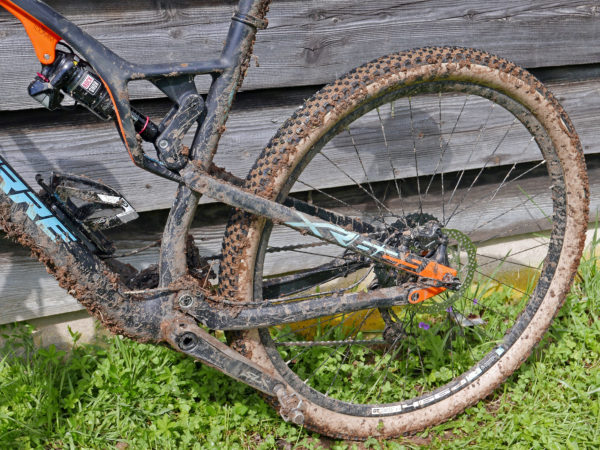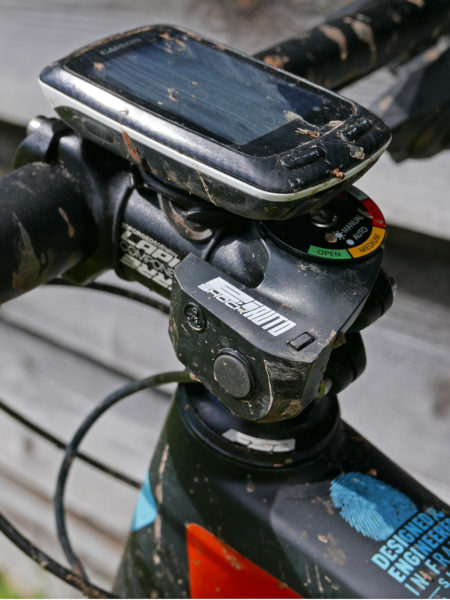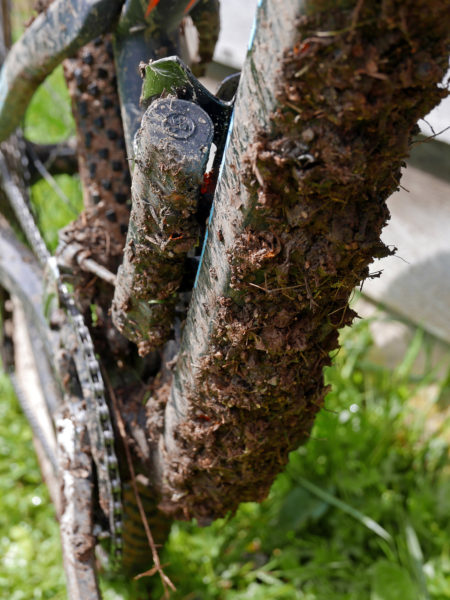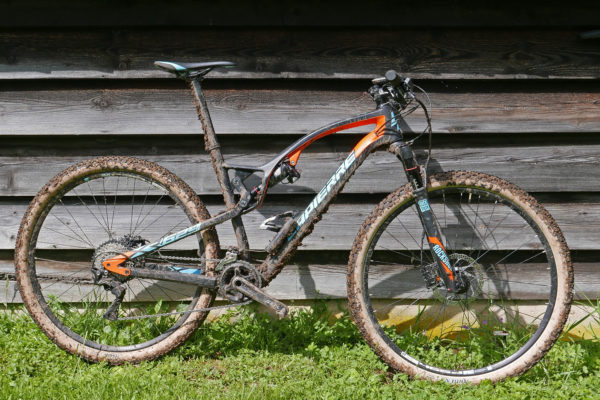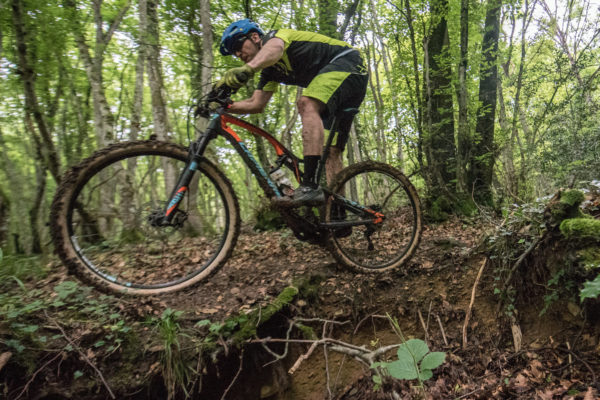
To round out its 70th year of building bikes in France, Lapierre has rolled out several all new bikes for both road and trail riding in 2017. Their two new flagship mountain bikes, both carbon full suspension designs based on the same Lapierre OST+ virtual pivot suspension tech, exist about as far apart on the mountain biking spectrum as you could imagine. The XR is an updated version of their lightweight cross country race bike that gets a trail riding overhaul to make it more capable on today’s technical XC courses. The Overvolt AM Carbon on the other hand is an e-bike, but with a rather unique motor and battery arrangement. Take a look at the XR after the break, in addition to our first ride impressions…
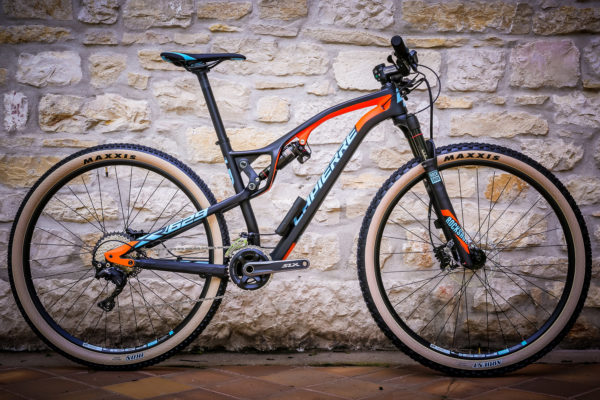
The new cross country platform gets a major redesign for 2017. It uses the same 100mm of travel as its predecessor, but drops the punctured-seattube shock mount for a slightly more conventional frame design with the linkage-driven shock mounted to the underside of the toptube. Lapierre did put a good bit of design effort into maintaining some of the look of the pierced-tube design after a decade of its use, and the resulting carbon cage around the shock is claimed to offer some stiffness benefits to the upper suspension pivots.
With the new frame layout, Lapierre’s OST+ gets a full carbon makeover for the 100mm cross-country setup. The new design uses all-carbon at the pivots and new carbon links. The virtual pivot point design effectively moves the pivot location from just in front of the cranks at sag where it offers small bump sensitivity, then out towards the front wheel under initial compression for a stable pedaling platform, and back closer to a high single pivot design for a progressive bottom of the short travel. The new carbon frame gets a claimed 1800g bare weight without the shock, and just 2100g with shock and rear axle included.
One of the big drivers of the bike’s overhaul was the modernization of its geometry. While the previous generation XR already had a relatively slack (for an XC race bike) headtube of 70° that gave it a benefit on the descents, its short front center didn’t offer much stability to match. The new bike then gets a further degree slackened head angle to 69° and 20mm longer frame reach to help keep the front end planted to the ground on steep climbs, and then bomb down the other side. At the same time they’ve gone to a much steeper 74.5° seattube to get the rider’s weight more over the front wheel, since the addition of dropper posts even on race bikes has made it easier to get back over the rear wheel when needed. Combine that with 5mm shorter chainstays for a still lively race feel.
Lapierre combines the longer, slacker geometry with a bit shorter stiffer stems than we are used to seeing on XC racers for even better control of the bike. Even though non of the full suspension XC bikes are coming stock with dropper posts, Lapierre sees them as the way forward for real flexibility on a range of courses and includes stealth internal dropper routing on the new XR.
The bike also gets what Lapierre calls a Trap Door, a port in the bottom bracket to install a Di2 battery inside the downtube. Their own excellent e:i Auto shock system can also apparently get an internal battery installation, although the early production one we tested was still external. The move gets the batteries and their electronic connections safely out of the elements, but also results in a lower center of gravity.
We talked with Lapierre at length about the idea of combining batteries for their e:i system and Di2, and it doesn’t look like there is much likelihood on the horizon. While they are generally open to the idea, Shimano seems less likely to want to open up their system. The benefit would probably only be to racers for shorter events, who might be able to go for shorter durations between recharging, but for most riders Lapierre sees the benefits and reliability of two independent systems to outweigh a few saved grams.
The XR really benefits from the automated compression adjustment and lockout of the rear shock, as you can set the sag around 30% for a really plush feel to the OST+ suspension and the bike automatically stiffens up for efficient climbing when you need it. Really with from our experience riding e:i Auto, it is such a great sensation to have the bike always in the right mode without ever having to think about it (or worrying about forgetting to open the shock after a long climb.) While I personally might use a lockout a half dozen times on a normal ride if it has a remote lever that is easy to use, or once or twice if I have to reach down to he shock body lever, watching the lights cycle through on the e:i, it is clear that it cycles though open/platform/locked with every rise and fall of the trail, maybe activating 50 times over the course of a ride. And always keeping the shock in the most ideal mode, based on pedal input, trail grade, and the bumps coming into the bike.
The e:i Auto system takes just 0.1 seconds to open from the time it measures at the fork sensor, the same time Lapierre says it takes an impact to go from the front to rear wheels at 36km/hr. The XR gets the newest update to e:i Auto and a more water resistant battery design. With a new o-ring seal, the new battery gets IP68 rating and a reversed orientation, with its connections now at the top to make it impervious to both water and higher pressure washing. The external setup really exposes the battery to both mud and water, although washing was more of an issue with the most recent externally battery setup.
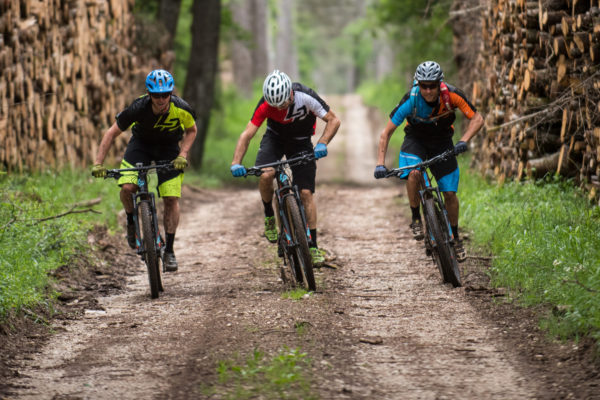
The new XR gets upgraded to Boost spacing as well for the added stiffness in the big 29er wheels. It also benefits from the move to metric shocks, which give the Rock Shox shocks better bushings and seals for improved durability. The new carbon XR will come in 4(1/2) spec levels that all share the same frame, available in 4 sizes. The top of the line XR 929 gets a RockShox RS-1 fork, Monarch shock with e:i Auto control, Level Ultimate brakes, a SRAM XX1 Eagle 12 speed drivetrain, and DT Swiss XR1501 wheels.
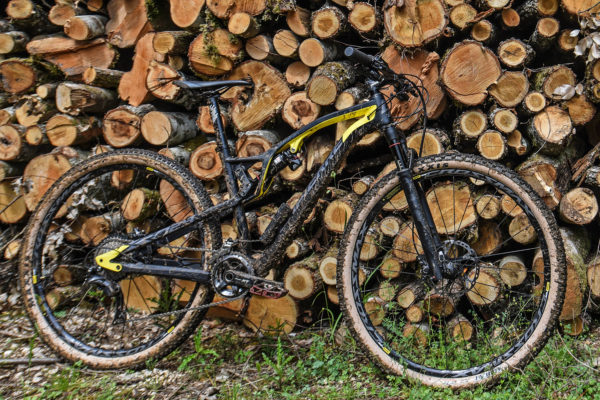
The next level XR 729 goes to a SID RL fork and a Deluxe RT3 shock, and will be available both with or without the e:i Auto shock system. The 729 will get a full Shimano XT 2×11 build with super wide range via the 11-40 cassette.
The XR629 goes to a Reba RL fork and is not available with the e:i system (although the 629 we tested did have e:i.) It rounds out the kit with a mixed XT/SLX double. The 529 will be the most affordable entry to the top carbon frame with a mixed Deore/SLX 2×10 and a Recon Silver fork to go with the non-e:i Deluxe RT3 shock.

We spent some time riding a version of the XR 629 build kit with the addition of the e:i Auto system and the new external battery above and around the vineyards surrounding Lapierre’s HQ and manufacturing in Dijon, France a few weeks ago and came away pleased with the updates. The new longer (and 1° slackened) front end well suits this bike that already had a reasonably relaxed head angle. The light frame weight does a good job of giving a quick feel on the climbs and pairs well with the e:i setup.
Then on anything from rolling terrain to proper fast and loose descending, the stable geometry and ability to run the OST+ suspension set up soft meant the bike handled rough trails really well. It definitely felt more like trail bike descending than an XC racer. I rode the bike in some loose muddy conditions, and while the tires weren’t always there to hook up in the corners, the bike still felt comfortable drifting though fast turns. It is certainly no enduro bike like its big brother Spicy, which shares the same suspension design and shock curves (just stretched out over 60mm more of travel), but I got the sense that it could keep up with a lot of 120mm bikes and certainly out climb them.
Final pricing and availability of the bikes won’t be ready until Eurobike at the end of the summer, but you should be able to anticipate late autumn arrival at your local Lapierre dealers.
